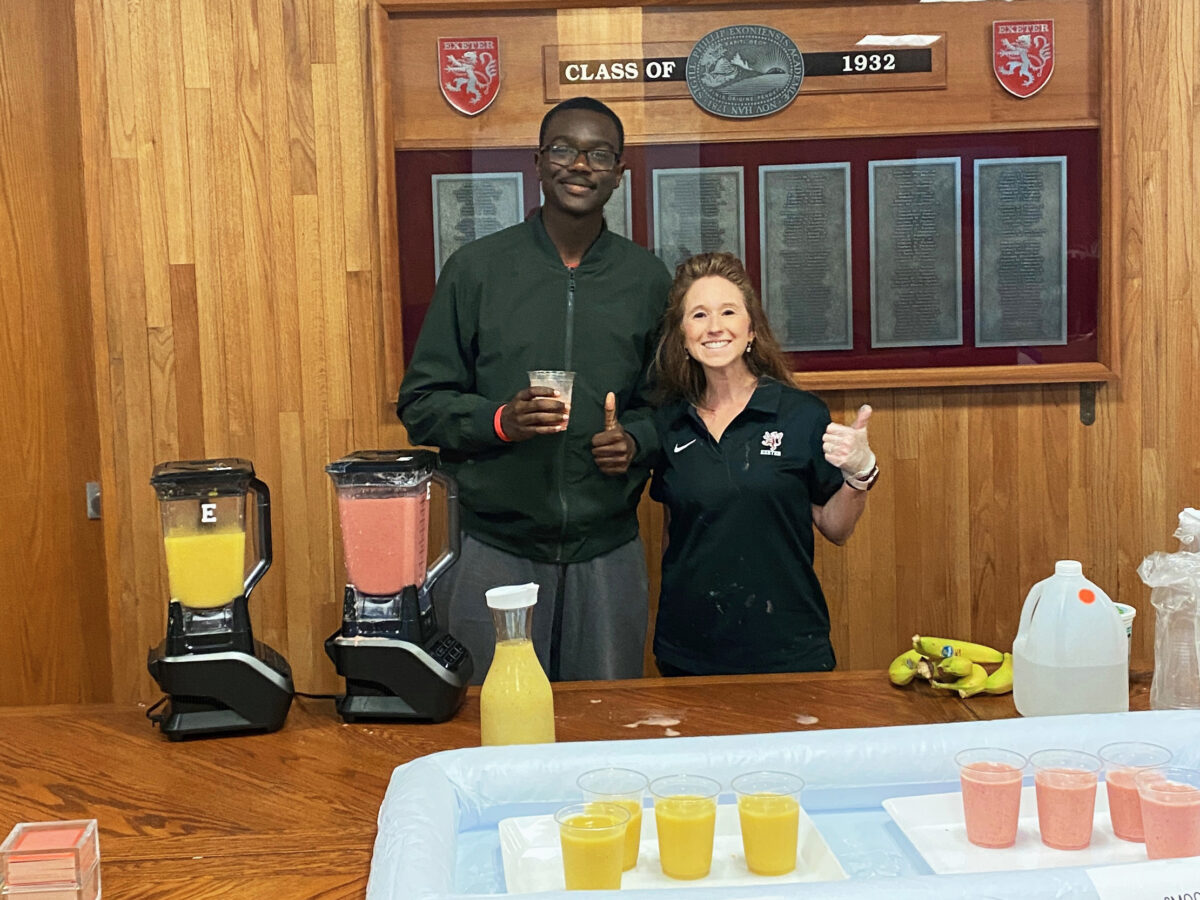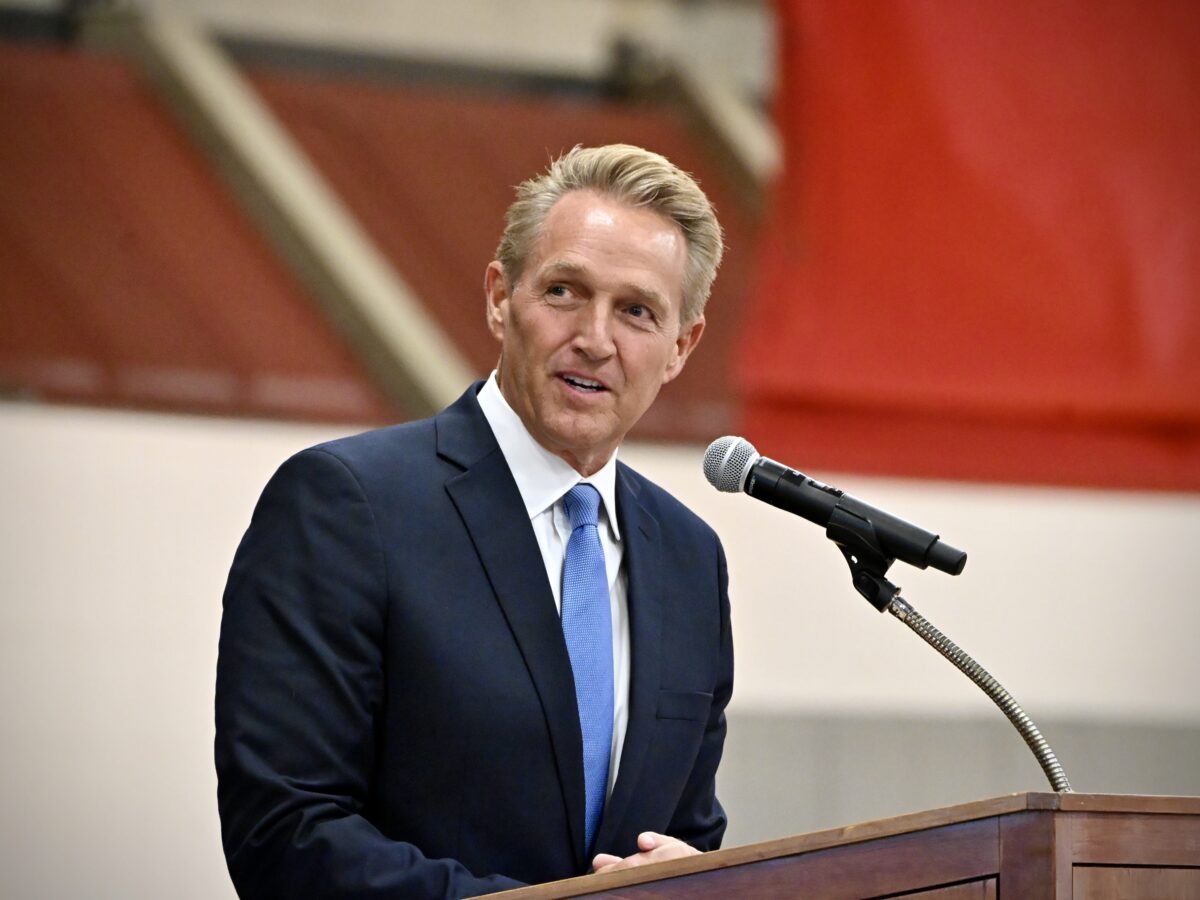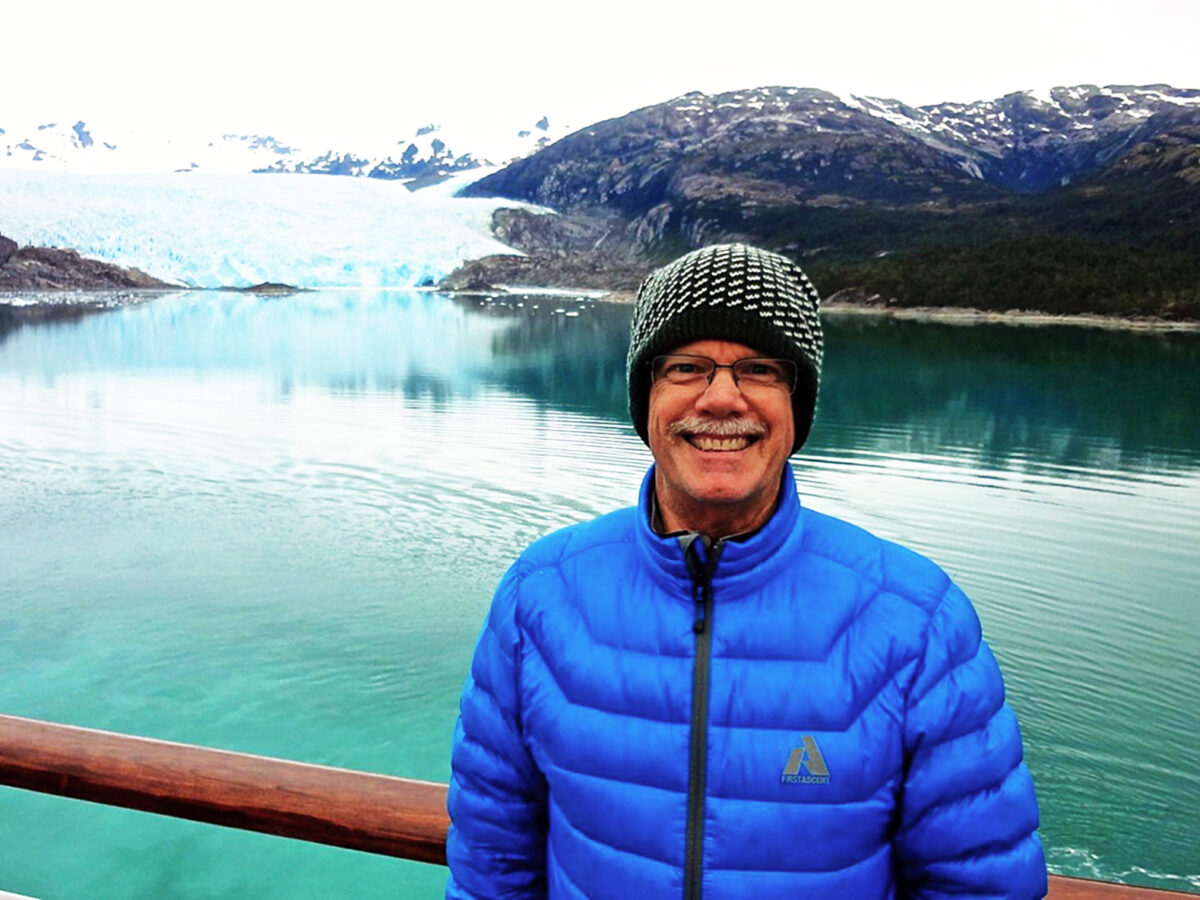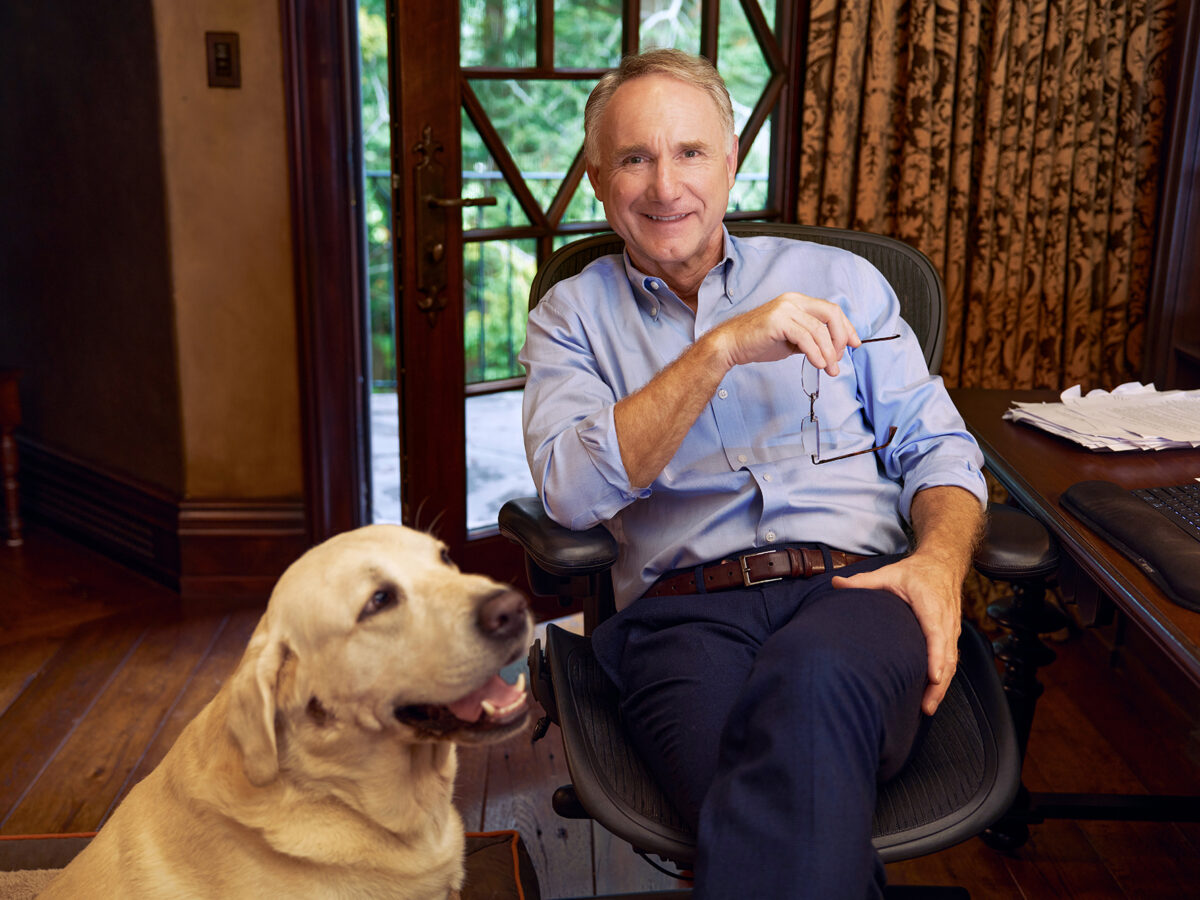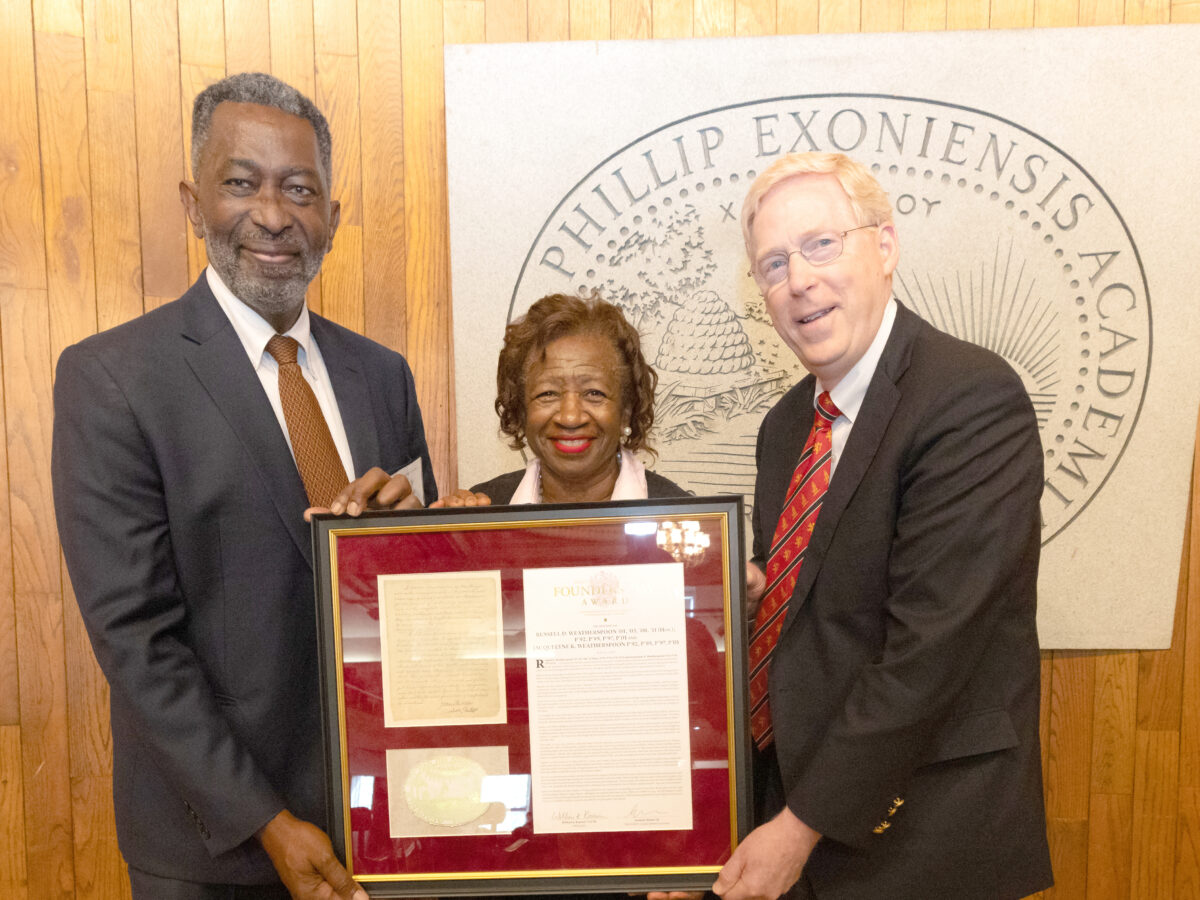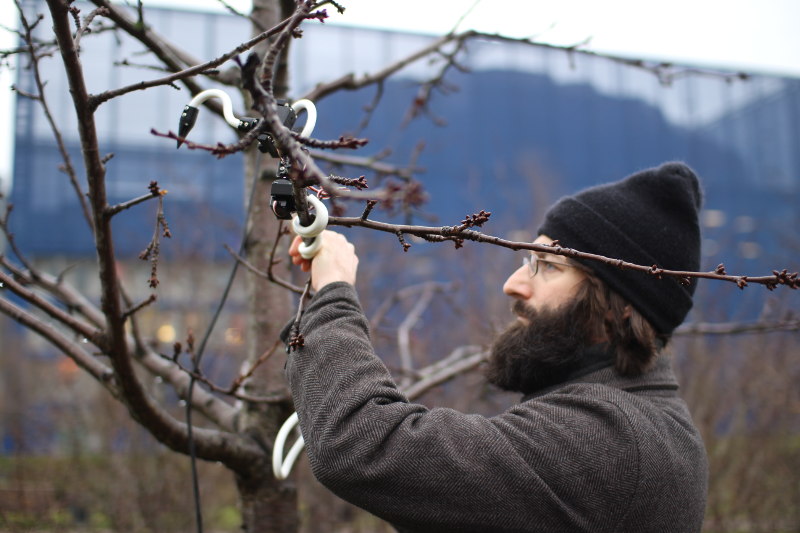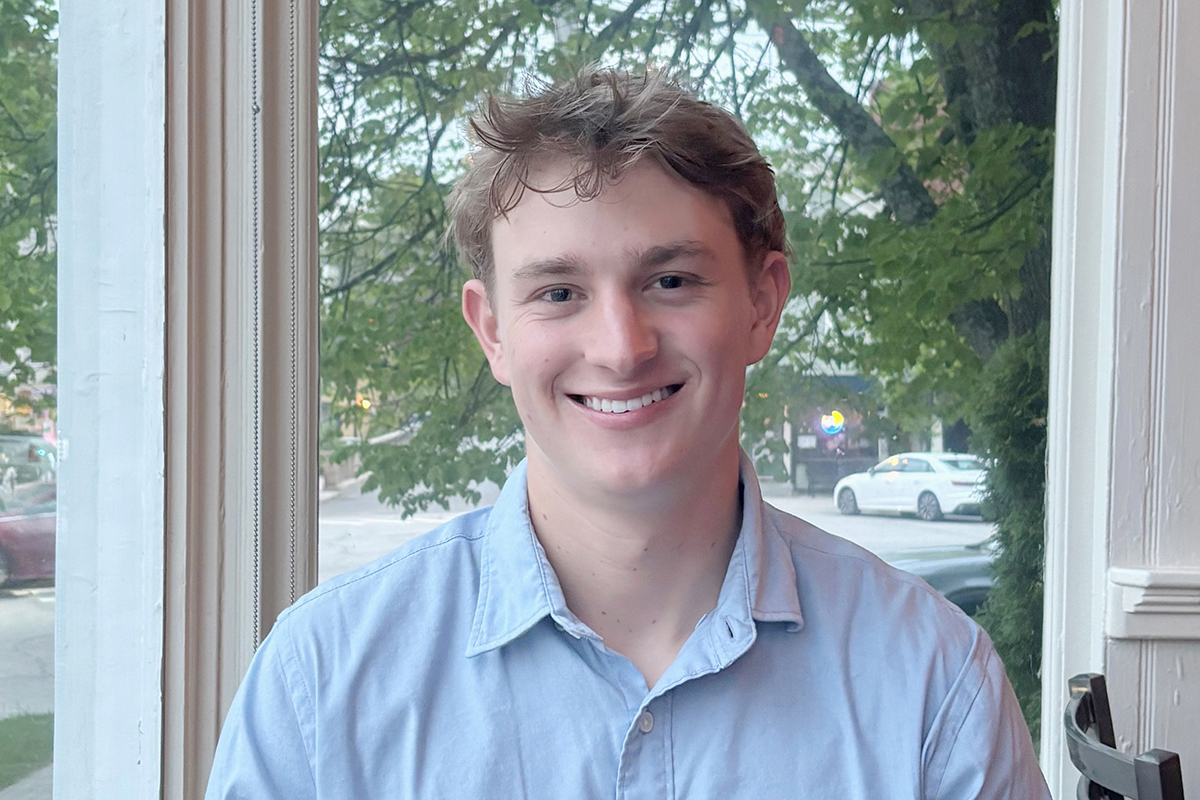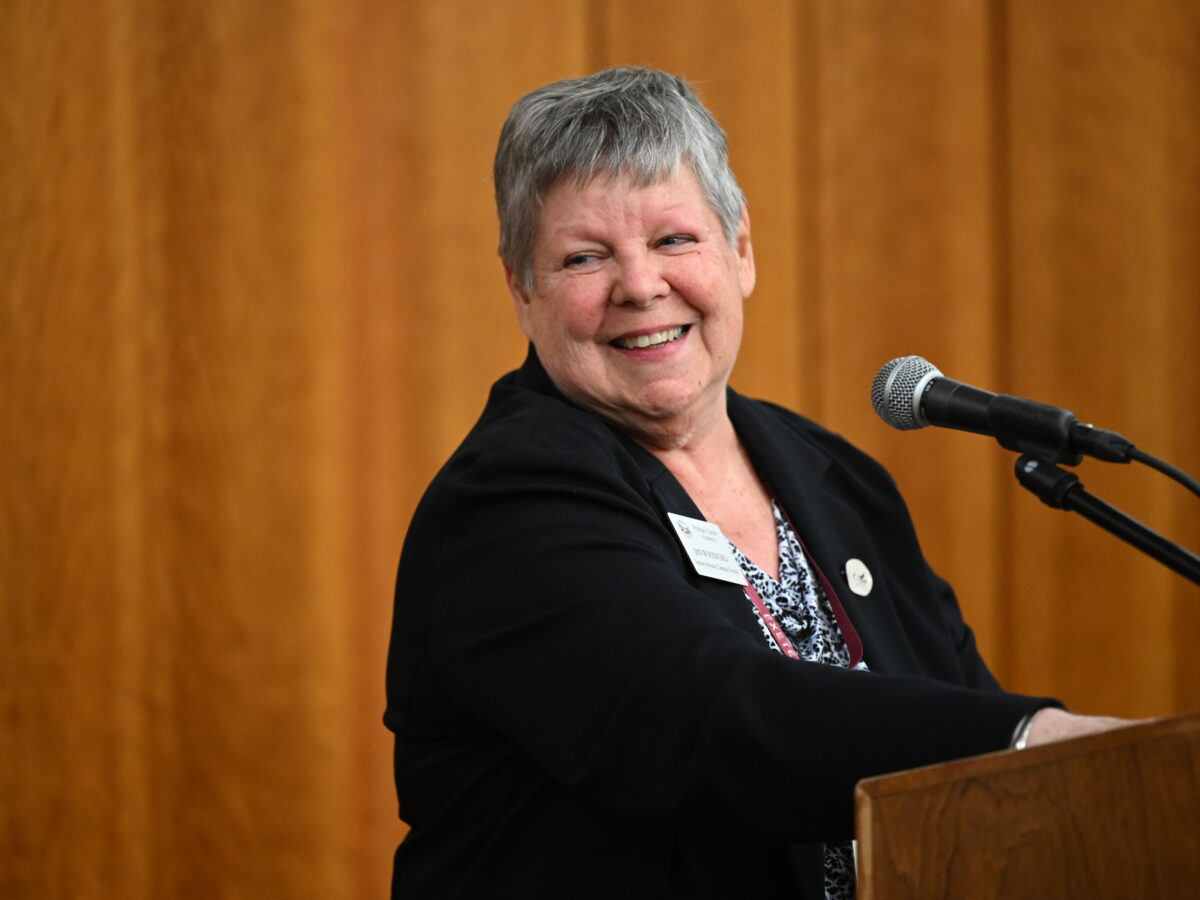Young alum brings lessons in non sibi, empathy to assembly
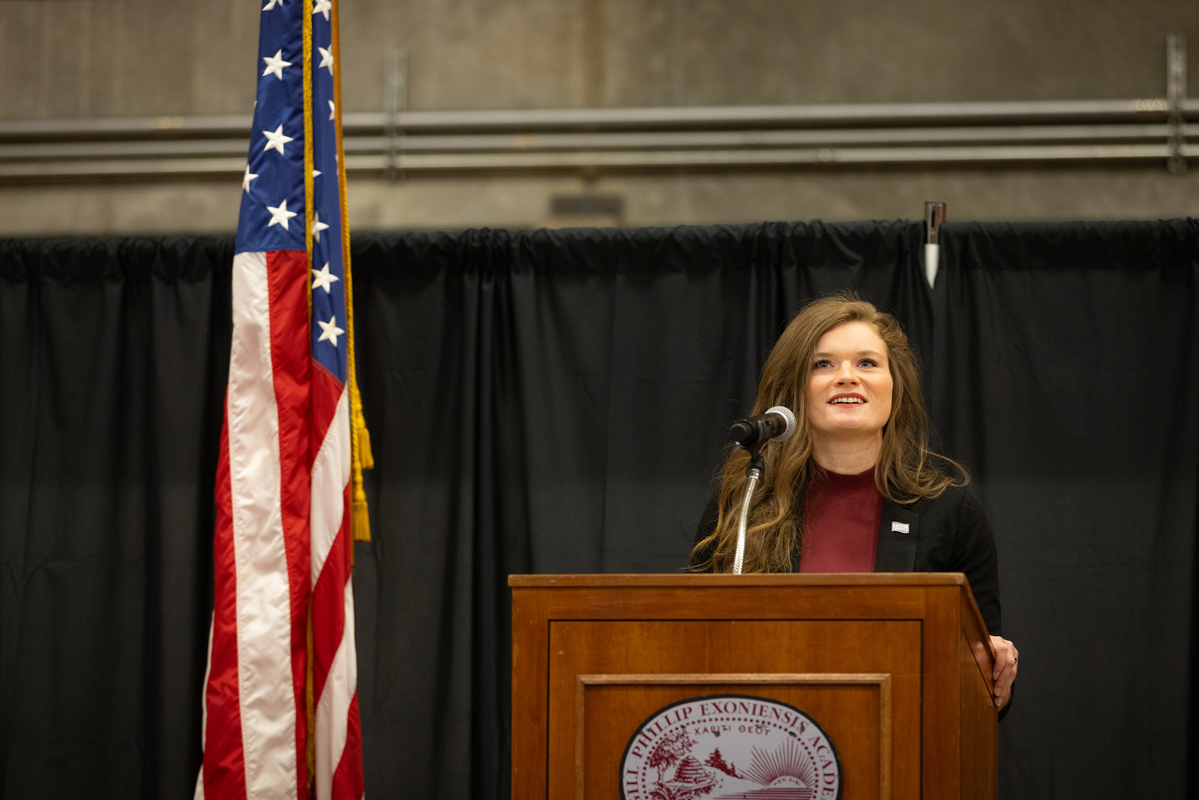
Army helicopter pilot Layne Erickson '18 delivered her address as part of Exeter Salutes program.
In the decade since Layne Erickson ’18 first arrived on campus, her relationship with non sibi has evolved.
As part of Exeter Salutes, the Academy’s annual celebration of faculty, staff, alumni and their family members who have served or are currently serving in the U.S. military, Army First Lieutenant Erickson addressed assembly describing her altruistic growth.
“When I came to Exeter … I felt this really intense pressure to be this perfect little Exonian,” she said. “Non sibi morphed into something that was rather competitive and for oneself.”
During her years on campus, she said her perspective and motivations matured. In an especially formative experience, Erickson studied and wrote about the first female graduates of U.S. service academies for her History 333 paper.
“It was clear to me that these women did not succeed in a vacuum … they lifted each other up even when it got them in trouble,” she said. “Their grand act of non sibi, in spite of the odds and in spite of the emotional turmoil that they went through, laid the groundwork for those who would come after.”
Erickson would continue a familial legacy of service as she matriculated to the United States Military Academy, becoming the first Exeter alumna to graduate from West Point. While there, Erickson’s lessons in non sibi continued. She recounted the literal growing pains she endured in her early days as a cadet.
“It poured on my first ever night sleeping outdoors, soaked myself and all of my gear. I didn’t have any dry socks left,” she explained. Instead of accepting dry socks from other members of her platoon, Erickson says she stubbornly trudged on with aching feet.
“Not only did I reject their direct acts of non sibi towards me, but I slowed down the entire platoon and in doing so, brought down morale amongst this collective, hindering our ability to accomplish our mission of the day.”
Ready to leave West Point, Erickson was encouraged by her platoon sergeant to stick it out knowing she’d find her place at the Academy.
“Without Sergeant Adams’ support and empathy, not only would my life have been completely different, but I wouldn’t have been able to move forward and pass on my own little acts of non sibi onto other cadets.”
Erickson encouraged Exonians to find ways — large or small — to spread non sibi to their peers.
“Maybe your non sibi is just studying with friends after class, maybe it’s heading over to the main stage tonight and supporting all of the work that your classmates have put in, maybe you’re a proctor or a club head or a team captain and you’re non sibi is just looking out for someone who needs a little extra support today.”
Present for Erickson’s address were other military veteran members of the Exeter community. The day’s events continued with the opportunity for students to eat lunch with Erickson and panel discussions featuring Erickson, Alex Najemy ’97, Holden Hammontree ’15, Instructor in English Nova Seals, Nat Butler ’64, and Bob DeVore ’58; P ’95, ’00.
